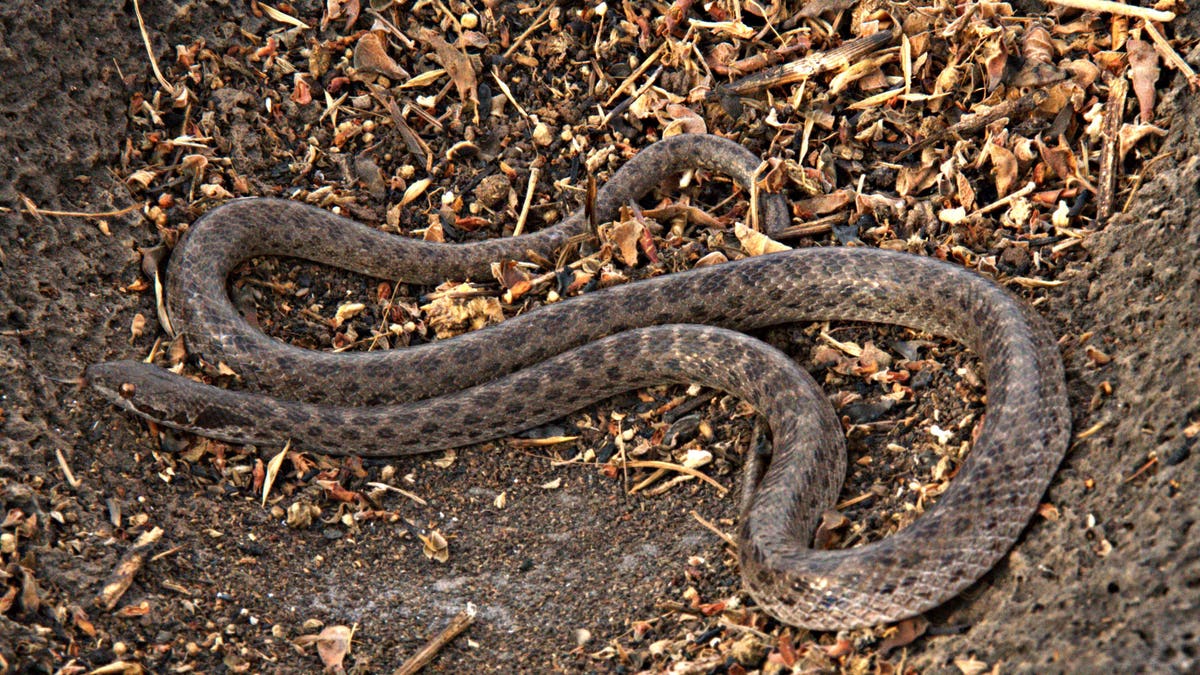
In this undated image released by Mexico's Ecology Institute (INECOL) on Tuesday May 20, 2014, a Clarion nightsnake slithers on the ground in the Revillagigedo Islands, over 400 miles off Mexico's Pacific coast. The first and only spotting of the species was made by American naturalist William Beebe in a visit to Clarion island in 1936. But according to a study published in the PLOS ONE scientific journal, the Clarion nightsnake was found again during an expedition in May 2013 on one of the Revillagigedo Islands. (AP Photo/Juan Martinez-INECOL) (AP2014)
On an isolated island far off the coast of Mexico, scientists have found a lost species of snake that hadn’t been seen in almost 80 years.
The Clarion night snake was spotted last year on the Pacific island of Clarion by researchers from the Smithsonian Institution in Washington D.C., which announced the discovery on its website Tuesday.
"The rediscovery of the Clarion night snake is an incredible story of how scientists rely on historical data and museum collections to solve modern-day mysteries about biodiversity in the world we live in," said lead author Daniel Mulcahy, a researcher at the National Museum of Natural History, in Washington, D.C.
This is the first sighting of the elusive serpent since it was described in 1936 by naturalist William Beebe, according to Discovery.com. It had initially been discovered in the first half of the 19th century.
While the snake was never officially declared extinct, scientists were unable to track down it down again on the island.
"Proper identification is the first step toward conserving this snake, and we plan to continue monitoring this species to learn more about the role it plays in the delicate Clarion Island ecosystem," Mulcahy said.
When Beebe found the night snake 78 years ago, he brought it back to the American Museum of Natural History in New York. Since then repeated attempts to find the snake – measuring about 18 inches – have failed, due in large part to its secretive behavior and black and gray coloring that allows it to camouflage itself easily.
In 2013, Mulcahy and colleagues at the Instituto de Ecología in Mexico set out to once and for all track down the sneaky serpent on the remote islands of the Mexican coast.
On the volcanic island of Clarion, the team of found 11 nightsnakes with DNA testing confirming that the snakes were a separate species from their mainland brethren.
The night snakes closest relatives reside in the Mexican state of Sonora and Sinaloa as well on the island of Santa Catalina in the Gulf of California. The snakes on Clarion are believed to have swum there from a river basin in Sonora, researchers said.
While the population on Clarion Island is stable, there are concerns that an invasive species of cats from a neighboring island could ruin the snakes’ food supply of lizards.
Follow us on twitter.com/foxnewslatino
Like us at facebook.com/foxnewslatino

